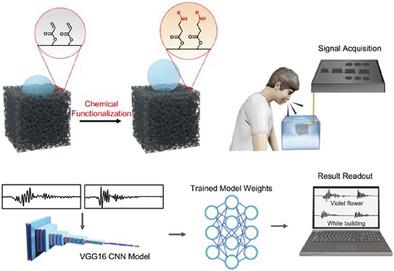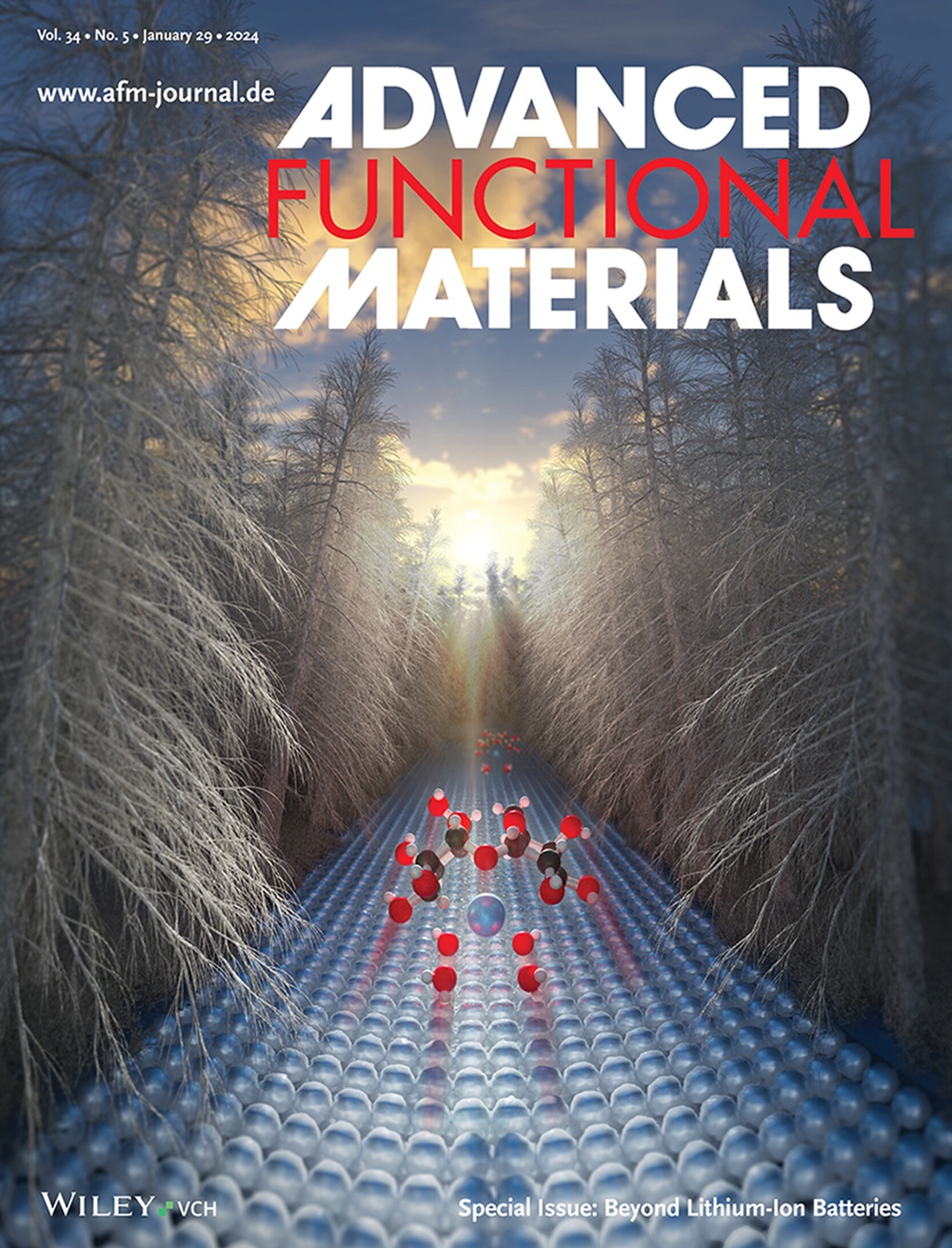Underwater Vibration Sensor to Enable Automated and Contactless Voice Recognition
IF 18.5
1区 材料科学
Q1 CHEMISTRY, MULTIDISCIPLINARY
引用次数: 0
Abstract
Individuals suffering from voice disabilities have limited access to currently available automation technologies that operate through voice commands. To address this issue, an alternative voice recognition approach is essential without directly monitoring the audio signals generated from the vocal cord. In this work, the design of a chemically reactive and conductive sponge is reported to create an underwater vibration sensor with a fast response time and high sensitivity, through orthogonal modulation of conductivity (40–2150 kΩ), water repellence (0°–154°) and mechanical properties (0.32–2.63 MPa). This class of porous sponge sensors enables the identification of subtle water waves generated at the air–water interface and extends its utility to detecting a variety of locomotion (squatting, jumping, walking, etc.), as well as automated voice recognition using a deep learning model without direct contact with the human body. Overall, this underwater vibration sensor provides a novel basis for remote interaction with automated technologies, which finds use in medical diagnostics, human-machine interfaces, and underwater communication systems.

水下振动传感器实现自动和非接触式语音识别
嗓音有障碍的人使用目前通过语音指令操作的自动化技术的机会有限。为了解决这个问题,必须在不直接监测声带产生的音频信号的情况下,采用另一种语音识别方法。在这项工作中,报告了化学反应和导电海绵的设计,通过正交调制电导率(40-2150 kΩ)、拒水性(0°-154°)和机械性能(0.32-2.63 MPa),创造出一种具有快速响应时间和高灵敏度的水下振动传感器。这类多孔海绵传感器能够识别空气-水界面产生的细微水波,并将其用途扩展到检测各种运动(蹲、跳、走等),以及使用深度学习模型进行自动语音识别,而无需直接接触人体。总之,这种水下振动传感器为与自动化技术的远程互动提供了一个新的基础,可用于医疗诊断、人机界面和水下通信系统。
本文章由计算机程序翻译,如有差异,请以英文原文为准。
求助全文
约1分钟内获得全文
求助全文
来源期刊

Advanced Functional Materials
工程技术-材料科学:综合
CiteScore
29.50
自引率
4.20%
发文量
2086
审稿时长
2.1 months
期刊介绍:
Firmly established as a top-tier materials science journal, Advanced Functional Materials reports breakthrough research in all aspects of materials science, including nanotechnology, chemistry, physics, and biology every week.
Advanced Functional Materials is known for its rapid and fair peer review, quality content, and high impact, making it the first choice of the international materials science community.
 求助内容:
求助内容: 应助结果提醒方式:
应助结果提醒方式:


